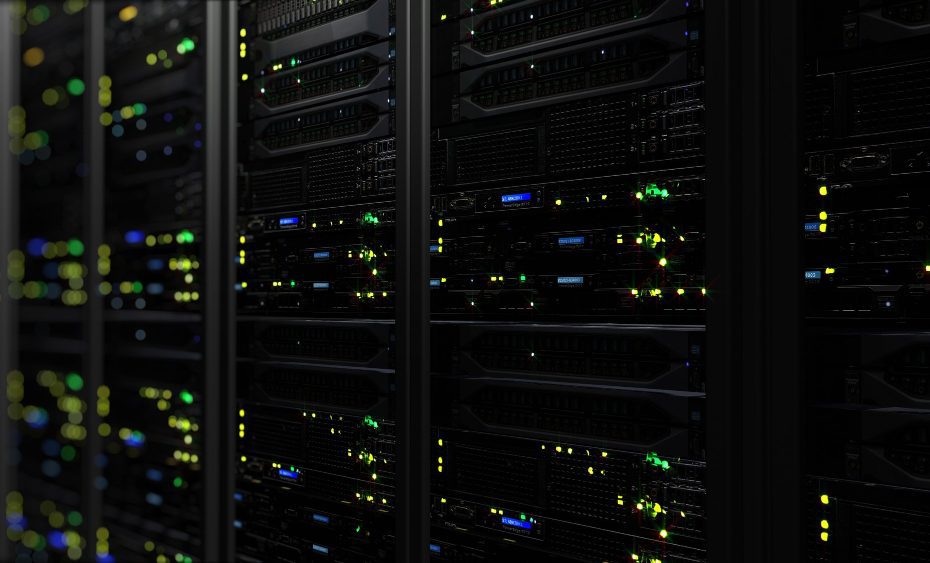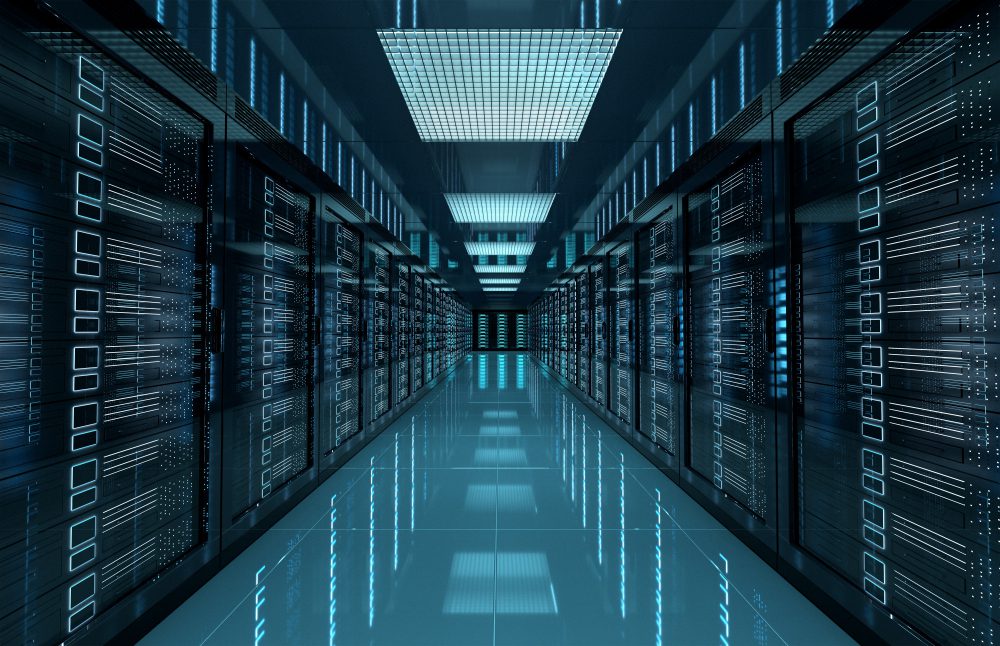Can I access my NAS from anywhere?
Many individuals and businesses rely on Network Attached Storage (NAS) devices to store and manage their data. NAS provides a convenient way to access files and data within a local network, but what about accessing your NAS from anywhere? Can you access your NAS remotely when you’re not connected to the same network? The answer is yes, and in this article, we will explore various methods to access your NAS from anywhere.
Method 1: Remote Desktop Connection
One way to access your NAS remotely is by using a Remote Desktop Connection (RDC) software. RDC allows you to connect to your NAS as if you were physically sitting in front of it. This method is particularly useful for Windows users, as Windows operating systems come with built-in RDC capabilities.
To access your NAS via RDC, follow these steps:
- Ensure that your NAS is powered on and connected to the internet.
- Enable Remote Desktop access on your NAS device.
- Obtain the IP address or hostname of your NAS.
- Launch the Remote Desktop Connection application on your computer.
- Enter the IP address or hostname of your NAS and click “Connect.”
- Enter your credentials when prompted.
Once connected, you can access your NAS just like you would if you were physically present on the same network.
Method 2: VPN (Virtual Private Network)
Another popular method for accessing your NAS remotely is by using a Virtual Private Network (VPN). A VPN creates a secure connection between your device and your NAS, allowing you to access it as if you were directly connected to the local network.
Follow these steps to access your NAS via VPN:
- Set up a VPN server on your local network or use a third-party VPN service.
- Configure your NAS to connect to the VPN server.
- Connect your remote device to the VPN server.
Once connected to the VPN, you will be able to access your NAS as if you were connected to your local network.
Method 3: Cloud Services
If you prefer a more user-friendly approach, utilizing cloud services is an excellent option. Many NAS devices support integration with popular cloud storage providers like Dropbox, Google Drive, or OneDrive. By syncing your NAS with a cloud service, you can access your files from anywhere using the cloud provider’s interface or mobile apps.
Some NAS devices also offer their own cloud services, allowing you to access and manage your data through their web or mobile applications. These services often provide seamless synchronization between your NAS and the cloud, ensuring that your files are always up to date.
Remember to take necessary security precautions when accessing your NAS remotely, such as setting up strong passwords, enabling encryption, and regularly updating your NAS firmware.
In conclusion, accessing your NAS from anywhere is indeed possible. Whether you choose to use Remote Desktop Connection, set up a VPN, or leverage cloud services, ensure that you prioritize security and follow best practices to protect your data.
Can I access my server from outside network without VPN?
If you want to access your server from outside the network without using a Virtual Private Network (VPN), there are alternative methods available. While a VPN is the most secure way to access your server remotely, it may not always be feasible or convenient for everyone. Here are some options to consider:
1. Port Forwarding
Port forwarding allows you to configure your router to forward specific ports to your server’s internal IP address. By doing so, you can access your server directly from the internet using the forwarded ports. However, keep in mind that this method can pose security risks if not properly configured.
2. Remote Desktop Protocol (RDP)
If you have a Windows server, you can use Remote Desktop Protocol (RDP) to access it remotely. RDP enables you to connect to your server’s desktop interface and manage it from another device. It provides a graphical user interface (GUI) experience, making it easier to navigate and control your server remotely.
3. Secure Shell (SSH)
For Linux-based servers, SSH is a common method for remote access. SSH uses encryption to establish a secure connection between your local device and the server. It provides a command-line interface (CLI) rather than a GUI, allowing you to execute commands and manage your server remotely.
Note: It is crucial to properly secure your server and follow best practices when accessing it from outside the network without a VPN. Make sure to use strong passwords, enable firewall rules, and keep your server’s software up to date.
Using alternative remote access methods without a VPN can be convenient, but it’s important to consider security implications and take necessary precautions.
Here is an example of port forwarding configuration:
| Port | Protocol | Forwarded to |
|---|---|---|
| 80 | TCP | 192.168.1.10:80 |
| 443 | TCP | 192.168.1.10:443 |
It is recommended to use a combination of secure protocols, strong passwords, and regular security audits to protect your server from unauthorized access.
In conclusion, while accessing your server without a VPN introduces certain risks, it can be done using methods like port forwarding, RDP, or SSH. However, always prioritize security and implement necessary measures to keep your server safe from potential threats.
Can I access data from another computer?
Introduction
In today’s interconnected world, accessing data from another computer has become a common requirement. Whether you are working remotely, collaborating with colleagues, or simply need to retrieve files or information, being able to access data from another computer can greatly enhance productivity and convenience.
Methods of Accessing Data
There are several methods available to access data from another computer:
- Remote Desktop: Using remote desktop software, such as Microsoft’s Remote Desktop or TeamViewer, allows you to connect to another computer and access its desktop and files as if you were sitting in front of it.
- File Sharing: File sharing enables you to access files stored on another computer over a network. This can be done locally within your home or office network, or remotely over the internet using services like Dropbox or Google Drive.
- VPN (Virtual Private Network): A VPN establishes a secure connection between your computer and another network. This enables you to access resources on that network, including files and databases.
Benefits of Accessing Data from Another Computer
Accessing data from another computer offers numerous benefits:
- Productivity: Being able to retrieve and work on files from any location enhances productivity and allows for flexible work arrangements.
- Collaboration: Accessing data from another computer fosters collaboration by enabling multiple users to work on the same files simultaneously.
- Data Backup: Storing files on multiple computers provides redundancy and helps protect against data loss due to hardware failures or accidents.
Security Considerations
While accessing data from another computer can be convenient, it is essential to prioritize security:
“Always ensure you are using secure methods of accessing data, such as encrypted connections and strong authentication mechanisms. Protecting your data and the data of others is of utmost importance.”
Can I access NAS via Wi-Fi?
Many people wonder if it’s possible to access their Network Attached Storage (NAS) devices using Wi-Fi. The answer is yes, you can access your NAS through Wi-Fi, as long as both your NAS and the device you are using to access it are connected to the same Wi-Fi network.
Setting up NAS Wi-Fi connectivity
To connect your NAS to a Wi-Fi network, you’ll need to make sure that your NAS device has built-in Wi-Fi capabilities or that it supports a Wi-Fi adapter. Once you have the necessary hardware, you can follow these steps:
- Access the NAS device’s settings or control panel through a web browser.
- Navigate to the network settings section.
- Select the Wi-Fi option and scan for available networks.
- Choose your desired Wi-Fi network and enter the password, if required.
- Save the settings and wait for the NAS device to establish a connection to the Wi-Fi network.
Accessing NAS via Wi-Fi
Once your NAS is connected to the Wi-Fi network, you can easily access it from any device that is also connected to the same network. This includes computers, laptops, smartphones, and tablets. To access your NAS, follow these steps:
- Open a web browser on your device.
- Type in the IP address of your NAS device.
- Enter your login credentials (username and password) to access the NAS interface.
- You will now have full access to your NAS and its contents over Wi-Fi.
Note: It’s important to ensure that your NAS device and the device you are using to access it are connected to the same Wi-Fi network for a smooth connection.
Quote: “Accessing your NAS via Wi-Fi provides convenience and flexibility, allowing you to access your files and data from anywhere within your Wi-Fi coverage area.”
If you encounter any connectivity issues or difficulties accessing your NAS over Wi-Fi, make sure to check your network settings, Wi-Fi signal strength, and network security configurations. You can also consult the user manual or support documentation provided by the NAS manufacturer for further assistance.
Benefits of accessing NAS via Wi-Fi
Accessing your NAS via Wi-Fi comes with several benefits:
- Flexibility: You can access your NAS wirelessly from various devices without the need for physical connections.
- Convenience: With Wi-Fi access, you can retrieve or store files on your NAS from anywhere within the Wi-Fi network range.
- Mobile access: You can use your smartphone or tablet to access your NAS while on the go, as long as you have an internet connection.
- Collaboration: Wi-Fi access enables easy file sharing and collaboration among multiple users on the same network.
Overall, accessing your NAS via Wi-Fi adds versatility and convenience to your file storage and retrieval processes, allowing you to stay connected and productive wherever you are within your Wi-Fi network range.
Can I access a NAS on iPhone?
With the increasing popularity of Network Attached Storage (NAS) devices, many users are looking for ways to access their NAS from their iPhones. Fortunately, accessing a NAS on an iPhone is indeed possible and relatively easy to set up.
Setting up NAS on iPhone
To access a NAS on your iPhone, you need to follow a few steps:
- Ensure that your NAS device is connected to your home network and powered on.
- Install a NAS file management app from the App Store. Some popular options include DS file, Qfile, and FileBrowser.
- Launch the app and follow the on-screen instructions to connect to your NAS. Typically, you will need to provide the NAS IP address, username, and password.
- Once connected, you should be able to browse and access files stored on your NAS directly from your iPhone.
Benefits of accessing NAS on iPhone
Accessing your NAS on your iPhone offers several benefits:
- Mobile file accessibility: You can access your important files, documents, photos, and videos stored on your NAS from anywhere using your iPhone.
- Backup and synchronization: Many NAS file management apps offer backup and synchronization features, enabling you to easily backup your iPhone data to your NAS or sync files between them.
- Media streaming: You can stream media files such as music, movies, and TV shows stored on your NAS directly to your iPhone without taking up additional storage space.
Things to consider
While accessing a NAS on your iPhone is convenient, there are a few things to consider:
- Data usage: Accessing large files or streaming media from your NAS on your iPhone may consume significant data if you are not connected to a Wi-Fi network. Be mindful of your data plan limitations.
- Security: Ensure that your NAS is properly secured with strong passwords and encryption to protect your data from unauthorized access.
“Accessing your NAS on your iPhone offers convenience and flexibility in managing and accessing your files on the go.” – Anonymous
In conclusion, accessing a NAS on an iPhone is possible and provides several advantages for managing and accessing your files remotely. By following the simple steps and considering the factors mentioned above, you can enjoy the benefits of accessing your NAS on your iPhone.
Can I access my NAS drive from anywhere?
Network-attached storage (NAS) drives have become increasingly popular for storing and accessing files in a centralized location. One common question many people have is whether they can access their NAS drive from anywhere. The answer is yes, with the right setup and configuration, you can access your NAS drive from anywhere in the world.
Setting up remote access
To access your NAS drive remotely, you need to enable remote access and set up port forwarding on your router. This allows you to access your NAS drive’s web interface or use specific protocols like FTP or SMB to connect to your files.
To enable remote access, log in to your NAS drive’s administration panel and navigate to the remote access settings. Here, you can configure the necessary settings to enable access outside your local network.
Dynamic DNS
A dynamic DNS service is essential for accessing your NAS drive from anywhere. Most residential internet connections have dynamic IP addresses, which means they can change over time. A dynamic DNS service assigns a domain name to your changing IP address, allowing you to access your NAS drive using a static domain name.
Many NAS drives offer built-in support for popular dynamic DNS providers. Alternatively, you can manually configure your router to update your dynamic DNS service whenever your IP address changes.
Security considerations
While remote access to your NAS drive offers convenience, it’s important to prioritize security. Here are some tips to keep your data safe:
- Enable strong, unique passwords for your NAS drive and any associated accounts.
- Use encryption when transferring files remotely, such as enabling SSL/TLS for FTP or using a VPN.
- Regularly update your NAS drive’s firmware to patch any known vulnerabilities.
- Consider enabling two-factor authentication for an added layer of security.
Remember, when accessing your NAS drive remotely, you’re exposing it to the internet, so it’s crucial to take appropriate security measures.
Conclusion
Accessing data from another computer opens up new possibilities for productivity and collaboration. By utilizing various methods such as remote desktop, file sharing, and VPN, individuals and organizations can easily retrieve and work on files regardless of their physical location. However, it is crucial to balance convenience with security to safeguard sensitive information.
With the right configuration and security precautions, you can access your NAS drive from anywhere. Whether you want to retrieve important files while traveling or stream media on the go, remote access to your NAS drive provides flexibility and convenience.
By following the necessary steps to enable remote access, utilizing dynamic DNS services, and implementing robust security measures, you can enjoy seamless access to your NAS drive’s files from any location.



